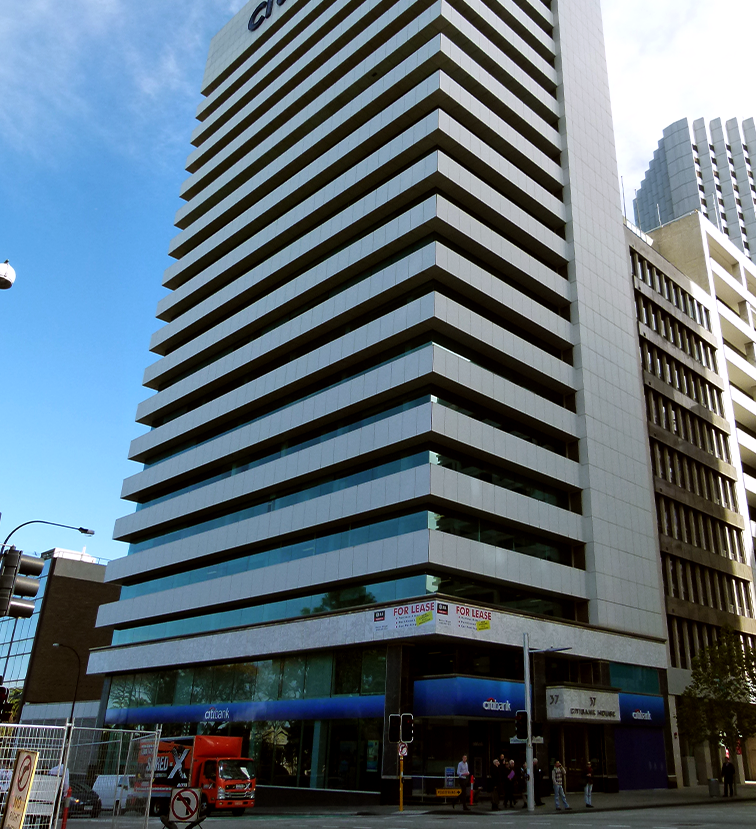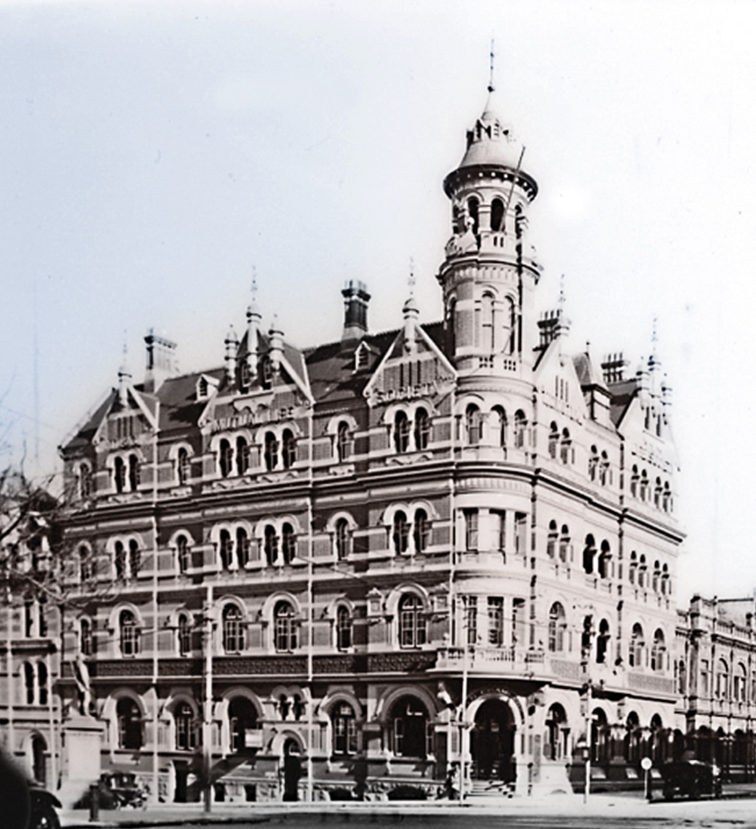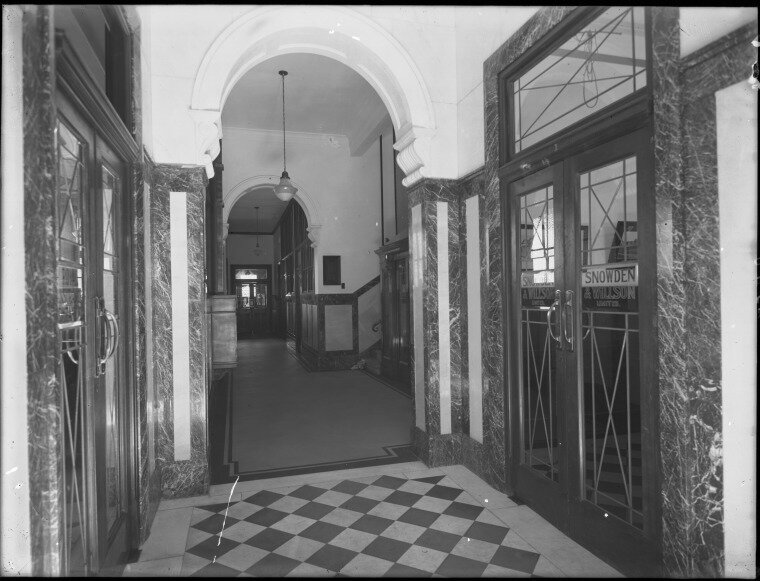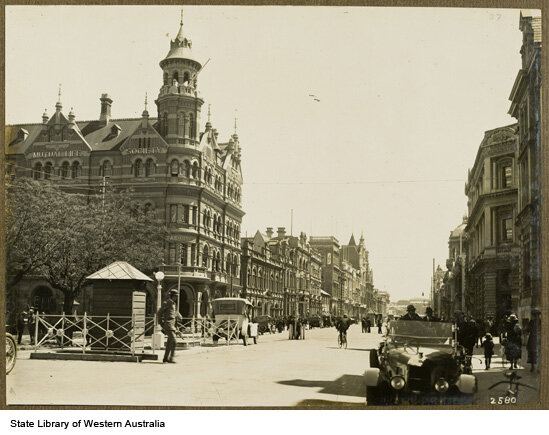MOIR'S CHAMBERS / T & G (1897-1960)
Herbert Moir was a London-based mining speculator and promoter who earned a fortune on Hannan’s Proprietary (Kalgoorlie’s Golden Mile) of 1895. He contracted Sir Joseph John Talbot Hobbs to design and oversee construction of Moir Chambers which, under builders Messrs Hewett and Wright, cost an estimated £18,000 and was completed in late 1897. The building stood five-storeys, included a two-storey tower on the corner and a basement. On the top floor was caretaker’s accommodation, with a staircase to the tower.
Roofed with American Vermont green slate, the building's exterior was a cherry red Northcote brick imported from Melbourne. This was richly ornamented with elaborate cement dressings, decorative cornices and ornamental carvings by Gallagher and Jose, a specialist building and sculpting company of Perth.
This building, which was said to constitute one of the finest private edifices in Perth, was situated at the corner of St George’s Terrace and Barrack Street, alongside the Weld Club and diagonally opposite the Post Office (now the Treasury Building). The frontage to those two streets enabled the architect, John Joseph Talbot Hobbs, to design a building with two fine facades on both street frontages, the whole of which was in the American Romanesque style.
It quickly became one of the most popular city buildings and the Bank of New South Wales took immediate tenancy of the ground floor offices fronting St George’s Terrace, and the Agricultural Bank and Forestry Department leased the entire first floor.
Though holding a paper value of £34,000, Moir sold the property in August 1908 for £27,000 cash to the Australasian Temperance & General Mutual Life Assurance Society, of Melbourne, and it was then renamed T & G Chambers.
Destruction
While T & G Chambers was widely acknowledged as one of the most beautiful buildings in Perth, the company’s growth dictated its demolition and replacement with a modern, 18-storey building which better served its needs. In early 1960, in the face of early civil protest, the Chambers was demolished. Excavations for the new building began in June 1960.
The 224-foot (68m) building opened in 1962 as the T & G Building and became the tallest building in Perth until 1970, when Parmelia (also known as Hammersley) House was built at the top of St George’s Terrace. Significant exterior alterations were carried in the 1980s, and the building adopted its current name of Citibank.
By Shannon Lovelady
Story from Demolished Icons of Perth




















